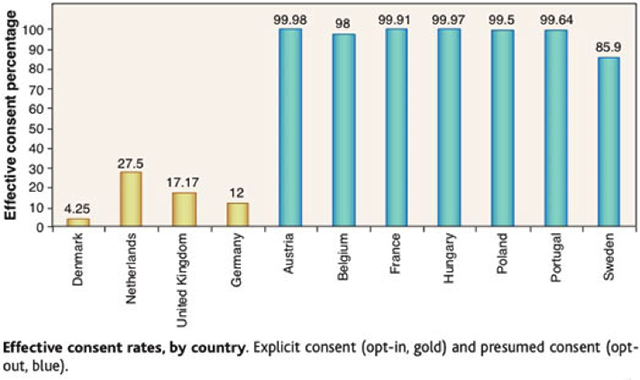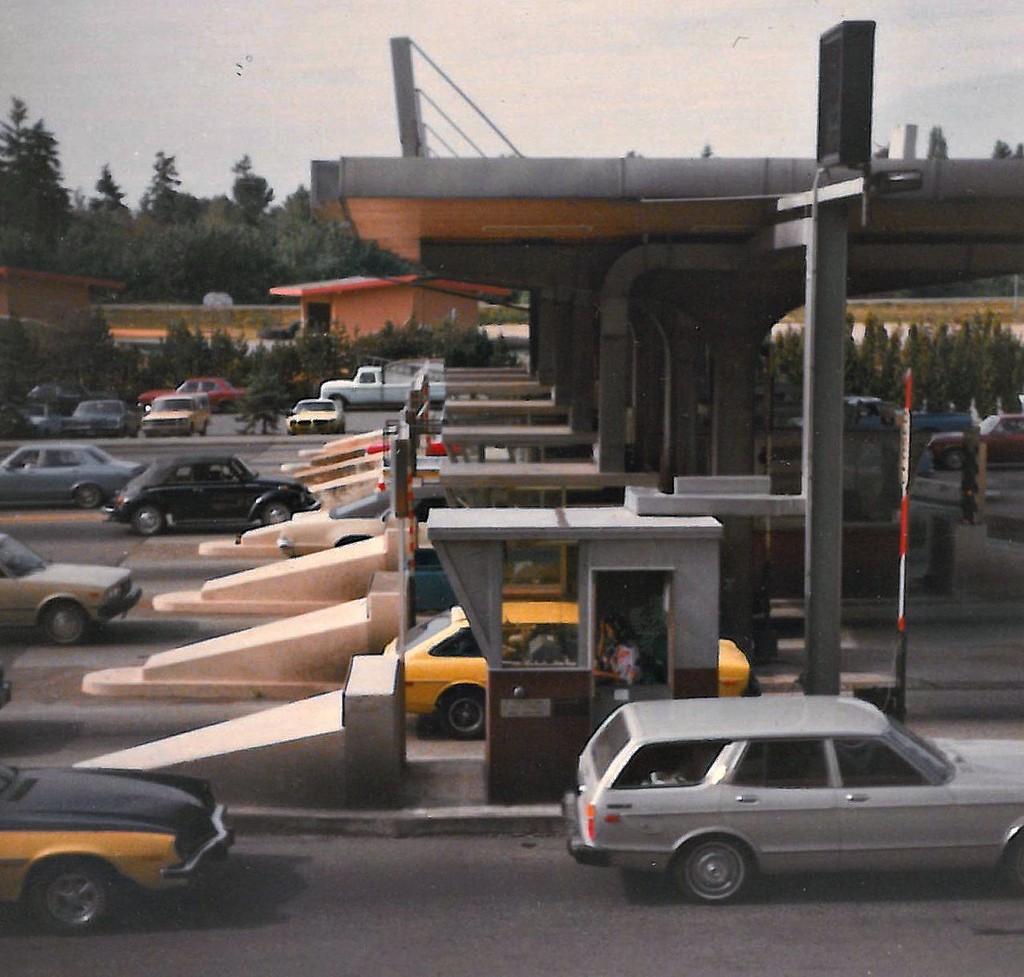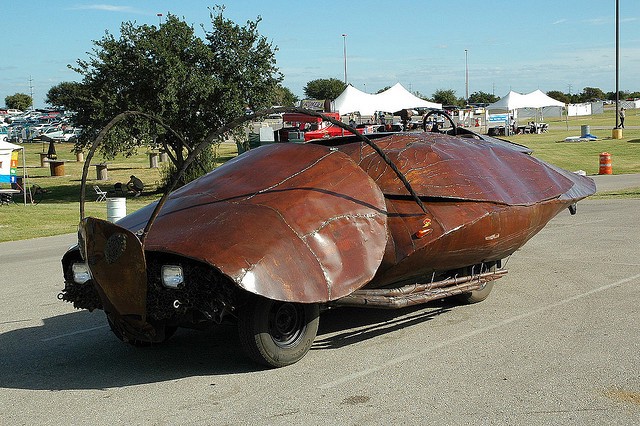Toward the Infallible Wawa Hoagie Order
by Jeff Quinton
A photo posted by Julie 💖 (@julzmarie97) on May 28, 2015 at 9:46am PDT
The Pope is coming to Philadelphia. Like all dignified guests of the city, he will be given a Wawa hoagie of his choosing. For the unfamiliar, Wawa, per its website, “is your all day, every day stop for fresh, built-to-order foods, beverages, coffee, fuel services, and surcharge-free ATMs.” Those are the facts, but the facts are the easy part. The hard part is The Choice.
Those who have ordered a hoagie at Wawa know what it’s like to be in front of those video-touch screens, their entire lives and future happiness lying on the horizon, any number of screen-touches ahead. But even for those who have ordered hundreds of hoagies at Wawa, with trusty standards and even reliable change-of-pace orders, The Choice can seem insurmountable.
With over twenty hoagies options available in three sizes on two different breads, plus five or more cheese options, ten plus spreads and even more toppings — and oh, did you want it toasted? — ordering a custom, Built-to-Order hoagie can be intimidating. Beyond these layers of choice, the time of day, time of year, mood, weather, location, promotions (Hoagiefest!!!), appetite, metabolism, digestion prowess, previous life choices, and future rationalizations are all factors to be considered.

But, no matter how difficult the choice, we should not lose sight of what brings us all here — the joy of eating food that we selected from a video screen. And just as we love Wawa because Wawa brings us joy, we want others to love Wawa because we know the joy Wawa can bring them. We want the Pope, just like the kid who comes to Philadelphia from the Midwest or China for undergraduate studies, to find a richer life through the love of Wawa.
Wawanscendentalists will point out, as does the science, that most people naturally find love for Wawa. Some, however, struggle with the options, with The Choice, and do not immediatelyfind this love. They say things like, “Sheetz is better” or “why get Wawa when there are great delis in the area?” Often, this is just a cry for help. They are really asking, “Why is everyone else’s order so appetizing, but my orders consistently leave me wishing I had outsourced my Wawa hoagie procurement? Why is my life absent of this joy?” They might blame the world or they might blame themselves or both, but regardless, there is hope.
People are flawed decision makers. Luckily, we (people) tend to make mistakes when choosing among options in certain, predictable ways. Some of these decision making errors will be lurking when ordering a hoagie at Wawa. We will identify them in order to hopefully best them.
The Default Effect
Our world is complex. Our brains are complex too, but they are built to turn the complex into the simple and actionable. One shortcut the brain uses is to rely on the default setting. The behavioral economics community calls this the default effect. Just how profound is the default effect? It has been found that culturally similar countries such as Germany and Austria or Belgium and The Netherlands, show vastly different organ donation rates, in which the biggest difference between the countries is simply the default setting (whether opt-in or opt-out is the default). The below is from a paper by Eric Johnson and Daniel Goldstein:

Dan Ariely, a professor of behavioral economics at MIT, using the above as an example, writes the following about why we can be as affected as we are by default settings:
You might think that people do this because they don’t care. That the decision about donating their organs is so trivial that they can’t be bothered to lift up the pencil and check the box. But in fact the opposite is true. This is a hard emotional decision…It is because of the difficulty and the emotionality of these decisions that they just don’t know what to do so they adopt the default option.
Those familiar with Wawa see where this is going. They know the “the emotionality” of the decision in choosing a Wawa hoagie. They also know that instead of deciding to choose a truly customized hoagie, Wawa also allows us to us to choose from “Classic Hoagie” options. All you do is pick a size and a figuratively off-the-shelf hoagie design (all hoagies are made to order). But what these options really do is extend us a crutch when facing these “hard emotional decisions.”
Now, any of the Classic Hoagies might be the optimal hoagie for a hoagie-desirer at any given time, but often they are not. They do not take full advantage of Wawa’s vast options that allow us to pick a hoagie that is perfectly matched to our current taste, mood, wants, and needs. In the behavioral sandwich community, we call this the Customizability Deficit. In plain terms, this is missing out on one life’s true joys. Unfortunately, even if we avoid being improperly influenced by default settings, there are decision making hurdles to hurdle when facing an overwhelming amount of options. Yes, choosing a Wawa hoagie is a double edged sword.
Tyranny of Choice
We like having choices, to a point. It is comforting to know that we can give our taste buds the taste of mayonnaise with Wawa’s “little bit of Mayo” option, while still being calorically responsible. We like the thrill of being able to choose a hoagie that is completely unexpected, but still a hoagie. We like to feel like we built something, especially when it only requires touching a screen a certain number of times. The data shows that the more choices we have, the more satisfied we are with the decision making process. Unfortunately, this is where the fun ends.
The data also shows that the more choices we have, the less satisfied we are with the outcome. Put differently, we become dissatisfied because we know that there are thousands of options, potentially superior ones, on which we are missing out. Would smoked turkey have paired better with this swiss and spicy mustard than the oven roasted turkey I went with? Would I even be second guessing myself if I went with honey mustard instead of spicy mustard? Would pickles have made the difference? This is what we call the Sandwich-Option Hindsight Spiral.

Process and Hope
The Pope will have a lot on his plate, so he cannot second guess his Built-to-Order hoagie order. Even though we knew and know the danger, we have all been there. So what to do? There is no perfect answer, but there is some helpful advice out there. Hoagie consumers find that they are most satisfied with their decision when either a) when they go with a decision they know has worked previously (unfortunately, not an option for the Pope) or b) understand that a single decision is a single point in the never ending process of improving our hoagie orders and that because we may never find the perfect hoagie, we can only do our best to take all of the contextual factors into account, check our assumptions, and tap the options on the screen that give us the best odds of giving us a hoagie we will enjoy.
It is not going to be easy, but I know the Pope can do this. I’ve seen it happened before. I’ve seen it happen more often than not. It might be choice-supportive bias, but I remember enjoying my first Wawa hoagie with minimal regrets. If I didn’t think the Pope were going to read the previous thirteen-hundred-plus words on choosing a hoagie at Wawa, I would tell him this: “The video-touch screen is not a river needing to be forded; rather, it is the boat that will take you to the safety and beauty and deliciousness of the opposing shore. So know yourself, your taste buds and stomach, know that your order will be imperfect, but that it will still be you. Know that it will bring you joy and that more joy is out there and that this is a positive because true joy lies within the journey, not the destination.”
More than anything though, I would tell him, “Before you can pick-up your hoagie at the counter, you first need to pay at the register. Good luck.”
Photo of Wawa store by Montgomery County Planning Commission; photo of ordering screen by Wikimedia
HeCTA, "Sympathy For The Auto Industry"
I have mentioned previously just how excellent this song is but I know how you occasionally need to hear something a few times before it sinks in, so I will give you another chance, this time with video. Also, I have some terrific news for you: This week, which has spent every waking moment of its savage existence battering you about for its own sadistic pleasure and laughing at you while you begged for mercy, is about to expire. Yes! This suck fuck of a week is almost dead! Everything seems so wonderful right now it would be churlish to ruin it by suggesting that next week will be worse, even though that is clearly the trajectory we are on now and until the end of our miserable lives, so let’s just focus on the fact that we have a couple of days of less terrible coming up. Enjoy!
New York City, September 23, 2015

★★★★ The shapes of clouds on blue were focused by the slits of the blinds, more effectively maybe than by contact lenses in bleary eyes soon afterward. Outside felt for a fraction of a moment as if it might be chilly, and then for another fraction as if it might be warm, before it resolved into neither, a supreme anodyne, under what had become a wholly clear sky. Down on the solar blast zone of Union Square, things were a bit warm. A man in sunglasses, wearing jeans and a nailhead blazer with the lapels turned up, crossed the street carrying a thick magenta blender beverage. The low peak of warmth passed and the cooling air carried the harbor smell up into the streets. The fattening moon stood white in the still-pale sky. The light and shadow up in the buildings saturated and deepened to tortoiseshell.
Does Your Adblocker Think You're a Moron?

The Wall Street Journal surveys efforts to get around adblockers, particularly on iOS:
Eyeo GmbH, the company behind popular desktop ad-blocking tool Adblock Plus, now accepts payment from around 70 companies in exchange for letting their ads through its filter. Eyeo stipulates that they must comply with its “acceptable ads” policy, meaning their ads aren’t too disruptive or intrusive to users. In total, ads from some 700 companies meet the acceptable ads policy, an Eyeo spokesman said. Eyeo is now reaching out to developers of other ad-blocking tools to cut deals that allow certain ads to pass ads through their filters, too, in exchange for payment.
Mr. Murphy [the developer of Crystal, the number one paid app in the App Store] said he’s taken Eyeo up on its offer, and plans to implement an option within his app whereby “acceptable” ads will be displayed to users. The feature will be switched on by default, Mr. Murphy said, and he will receive a flat monthly fee from Eyeo in return. Mr. Murphy declined to disclose the fee, but said he expects to make less money from Eyeo’s payments than from sales of the app itself.
If your adblocker takes money from you in order to block ads, and then takes money from huge companies in order to show you the ads that you paid for it to block, then yes; it’s just using you to erect a tollbooth.
Previously: Welcome to the Block Party
(P.S. However! If you do want to help a small independent publisher, please whitelist us in your adblocker if you don’t mind, thanks. If not it’s cool, sorry for bothering you. ;-))
Photo by K. David Clark
God's Condos
by Brendan O’Connor

In midtown Manhattan on Tuesday, the main organ at the Cathedral of St. Patrick, the seat of the archbishop of the Roman Catholic Archdiocese of New York, Cardinal Timothy Dolan, was being tuned in preparation for a visit from the Bishop of Rome and Sovereign of Vatican City, Pope Francis. The eighty-five-year-old organ comprises seven thousand, eight hundred and fifty-five pipes, the shortest of which are less than an inch long and the longest of which, at thirty-two feet, are laid horizontally in the walls above the tourists’ and parishioners’ heads. A long, high note rang out before being joined by another, lower note. Tourists walked between the pews, eyes and iPhones rising to the ceiling as workers dismantled scaffolding and applied a dark brown finish to the carved wood rising around the main altar. Francis will be the fourth pontiff to visit the cathedral when he attends vespers, or evening prayer, on Thursday. His imminent presence has hastened the conclusion of a three-year, one-hundred-seventy-seven-million-dollar project to restore the structure to its original appearance.
Construction began on St. Patrick’s in 1858. After a pause for the Civil War, it opened in 1879 and, according to the New York Times, was consecrated in 1910, once it was free of debt. But by 2012, the white and gray marble of the facade had absorbed so much soot and dirt as to be indistinguishable from each other, and an inspection found about eighteen thousand areas needing repair. Inside, too, the cathedral — built as economically as possible — was falling apart. “If we don’t do something substantive for St. Patrick’s Cathedral, in four or five years we’re going to have to close it, because it will be dangerous,” Cardinal Dolan told the Times. “There is actually an exponential degradation of the building,” said Jeffrey Murphy, a partner in the architectural firm responsible for the renovation. “A little crack that would cost three hundred dollars to fix initially has the potential to turn into a several thousand dollar stone replacement if left unchecked. It’s not hyperbole to say that doing nothing will cause the archdiocese to spend a lot more money down the line.”
For all intents and purposes, the renovation, which was scheduled to be completed in December, is done. The sprawling gallery organ has been dismantled and reassembled after each pipe was cleaned individually, as were the cathedral’s nearly four thousand stained-glass panels. The ceiling’s original paint scheme has been restored. The sixteen-and-a-half-foot tall, five-and-a-half-foot wide, ninety-two-hundred-pound bronze doors were removed, repaired, and reinstalled. The project received thirty-seven million dollars in financing from the cathedral’s trustees and one hundred million from private benefactors, Kate Monaghan, a spokeswoman for the Roman Catholic Archdiocese of New York, told the Times. The rest of the hundred and seventy-seven million dollars is still being raised.
Elsewhere, though, all is not well in the archdiocese, which represents 2.8 million Catholics in three hundred sixty-eight parishes throughout Manhattan, the Bronx, Staten Island, Westchester County, and part of the Catskills. In November of last year, Cardinal Dolan announced that a hundred and twelve of those parishes would be merged to create fifty five new parishes, and that, in thirty-one of those new parishes, a church would be closed. (The Brooklyn Diocese, which includes Queens and claims a million-and-a-half million Catholics, reduced its total number of parishes to a hundred and eighty-even from a hundred and ninety-nine in 2009.) “Years of pastoral experience tell us that churches which are ten to twenty percent full do not usually lead to meaningful and uplifting liturgies where we are drawn to give praise and thanks to our loving God,” he said in a 2013 financial report. “And, apostolates and ministries of education, service, and charity — the ways within which we witness to the world — cannot flourish where there are not significant membership and resources to support them, so critical pastoral needs are not being met.” Basically, the church is downsizing.
Before November, forty-two parishes had been consolidated in New York since the mid-sixties, Dolan told the Times. But with falling attendance numbers — on average, only about fifteen percent of the archdiocese’s Catholics regularly attend Sunday Mass — and rising maintenance costs, more drastic measures were needed. In Dolan’s original announcement, he identified thirty churches that would be closed; in May, he identified seven more, leaving the archdiocese with two hundred and ninety-six parishes — twenty percent smaller than it was a year ago.

The Catholic Church is not the only religious organization to crack under the pressure of the twenty-first century New York City real estate market: According to the Times, the Jehovah’s Witnesses, who have been based in Brooklyn since 1909, have begun selling off the thirty-four buildings they own in Brooklyn Heights and Dumbo — highly desirable neighborhoods, both — ahead of their planned 2017 move upstate to the Hudson Valley; meanwhile, the Manhattan-based Episcopal Church rents out space in its headquarters building to the Haitian Consulate, a French-American school, and the Ad Council.
And what happens to closing New York churches? They get made into condos, of course! Last year, DNAinfo reported that in the past two decades more than twenty historic churches and church-owned buildings in Brooklyn’s “brownstone belt,” stretching from Bedford-Stuyvesant to Carroll Gardens, have been converted for residential use. In 2005, two buildings once used as a church and a school at 401 Hicks Street and 101 Warren Street, in Cobble Hill, were gut-renovated and converted into fifty nine residential units called The Arches at Cobble Hill.” Some of the units retained original features, like stained-glass windows and pillars. These are popular with people looking for “old world charm” and “modern convenience,” a broker told DNAinfo. In 2008, a side-by-side former church and rectory built around 1870, at 264–266 Cumberland Street, in Fort Greene, were converted into condos called “The Sanctuary.” In June, a one-bedroom, nine-hundred-square-foot condo there sold for just under nine hundred thousand dollars. In late 2013, a former Pentecostal church at 541 Leonard Street, in Greenpoint, was converted into three condos. The owners put the condos on the market last year for as much as two-and-a-half million dollars before pulling them and relisting as rentals. Last summer, the 145-year old St. Vincent De Paul Church, at 167 North 6th Street, in Williamsburg, converted into forty rental apartments called “The Spire Lofts” hit the market starting at over four thousand dollars for a one and a half bedroom. “People love the aesthetic of the reclaimed wood, old beams, exposed brick and stained glass,” one broker said. “It’s something different and holds the original charm and character of the church.”
Earlier this week, DNAinfo reported that the Saints Peter and Paul Church, at 321 Wythe Avenue, in Williamsburg, saddled with four hundred and fifty thousand dollars in debt, will lease land to developer Watermark Capital Group starting at just over two million dollars per year. Watermark will convert one of the buildings and a parking lot into a multifamily residence, although the church will retain a certain degree of approval over the design of the development. Also, DNAinfo reports, the lease stipulates that there shall be no activities associated with abortion, birth control, euthanasia, stem-cell research or pornography at the development, including but not limited to consulting about abortions or even any signs with information about birth control. Now that really does hold the original charm and character of the church.
Photo of the Watch Tower by Sergio Herrera
A Poem by Natalie Scenters-Zapico
by Mark Bibbins, Editor
Argyria
You swallow silver bullets with a glass of milk until grey
appears on your earlobes and a faint blue moon drapes
itself across your cuticles. A grey that makes you think
of dying as an alien. Not the alien they called you
as a child because you had no papers, but the alien
they called you because your ears are removed
from your head. To eat silver is to get closer
to wealth. To eat silver is to get closer to buying
your mother a new kitchen stove, a car, a sofa
just for napping. Argyria is a skin condition
that has made your blood thicker and darker.
Will argyria turn you toxic? Slide yourself
across the greyscale, let argyria hold you
gainsboro, drip dimgrey, and sputter
slate. Say: hold me, Argyria, until I become the silver
men mine my #C0C0C0 body for, until I am the silver
chain they pull across the necks of their hungry
daughters, and feed to their teething sons.
Natalie Scenters-Zapico is from the sister cities of El Paso, Texas, United States, and Cd. Juárez, Chihuahua, Mexico. She is the author of The Verging Cities (University Press of Colorado, 2015) and she currently lives in Salt Lake City with her husband, José Angel Maldonado.
You will find more poems here. You may contact the editor at poems@theawl.com.
Steve Hauschildt, "Sundialed"
If you woke up this morning with a vague sense of relief and anticipation because you believed it was finally Friday and soon all the cares of the week would be kept, however briefly, at bay, only to crumple under the weight of descending darkness on the realization that you were mistaken and it was in fact Thursday and you still had two more days of your horrible, corrosive non-weekend life to suffer through, I want to tell you that you are not alone. There are thousands of us just like you moving about this world, heads down and voices stilled, just hoping to make it through the next two days without bursting into tears on public transportation or doing something drastic out of frustration with whatever conversation we find thrust upon us during the terrible quotidian nightmare a succession of poor choices and inertia have caused our lives to become. Listen: It’s two more days. The sun will shine. The time will pass. You’ll make it, I promise. Close your eyes, take a deep breath, remind yourself that nothing matters, and keep pushing forward. You don’t even have to push very hard, just keep pushing. The other options are somehow actually less pleasant than the agony you currently endure, difficult though that may be to believe. Perhaps this song will help, so do try to enjoy.
New York City, September 22, 2015

★★★ The clouds were smooth and solid but unfraught with rain. The four-year-old needed his jacked, meaning the four-year-old needed his name written in his jacket. The sun was a white spot. Flattened, matted horse dung had been aging in the roadway. In the middle of the morning, light came through as if it meant to, but then went away again. The clouds were the same color as before but their aspect was changed, lumpier. Then they broke up into an afternoon hodgepodge, clouds of all shades and kinds, high and low, little ivory cumulus puffs in the distance and big dark ones nearer at hand. There was even some sun — enough to flood the landscape along Broadway before dinner, to brighten Columbus Circle and Lincoln Center and the Ansonia, and to shine on the white bricks of the little veterinary hospital on the cross street. Bright pure silver-white stood above pink shreds, and then the silver went pink, a full florid sundown routine. The chill on the night air, on the way to get tissues and medicine, was the only thing that made the sinuses feel any better.
The Search for the Song of the Summer: Everything Ends
by Vijith Assar

Last year’s putative “Song of the Summer” was a national embarrassment; as a result, American songs — and for safe measure, all songs in English — are no longer eligible. The Awl has presented alternatives throughout the summer, which ends today with the vernal equinox.
“심쿵해 (Heart Attack)” by AOA
#12 in Japan
K-pop’s post-Psy moment in the U.S. is pretty much over, but the South Korean music industrial complex is still cranking away; after the expected success in their home market, this girl group also branched out with alternate versions of their latest single translated into Chinese and Japanese.
Attempts at world domination are reliably entertaining, so let’s help them out, shall we? If only because I can’t remember the last time I saw a teen pop group this large in the U.S. — there are eight members, including one drummer who doesn’t participate in the choreography. Here they swap out leads so quickly and stitch together the vocals so tightly that the singers are still all but indistinguishable by the end; it’s a five-minute song, so that’s 37.5 seconds allotted to each member, if we allow no time for breathing. To keep things under control, they’re sometimes split into two color-coded sub-groups, just like the blue and gold teams from the early-nineties X-Men. Note also the additional superhero sound effects as they wind up for the big finale. You’re probably gonna have to just go along with this, because you’re vastly outnumbered and none of them really seem to care what you think.
“Fuori c’è il sole” by Lorenzo Fragola
#7 in Italy
I don’t know about you, but I sure could have used this one a few months ago — it sounds like the kind of summer I wish I’d had: carefree, rejuvenating. Listening to these drums outside seems like a reliable way to correct whatever has veered off course in your life, if only because they’ll make you restless enough to go do something about it.
“Orente” by Adekunle Gold
#2 in Nigeria
Summer is a physical state that arises when the sun and earth are positioned just so, but it’s also a concept that people have collectively come to idealize through centuries of learning how to survive through the winters. By now it means a lot more to us than heat: We are supposed to travel, take vacations, have romantic flings, nap on beaches, gaze at skylines from rooftops while nursing margaritas. So I can’t tell whether it’s the song or the darkening September outside, but there seems to be something regretful and urgent buried here in the guitar line. There’s always next year, until there isn’t.
One Weird Trick Whenever You Rent a Car
by Matthew J.X. Malady

A few weeks ago, after enjoying a lovely dinner on the first night of our Hawaiian vacation, my wife and I returned to the restaurant parking lot and opened the doors of our rental car. The light inside the vehicle turned on, and less than a second later, my wife started screaming. Loudly, at a super high pitch. She also appeared to be swinging her arms and hopping a bit. I looked down at the passenger seat. Roaches were running wild inside the car. A bunch of roaches. Four of them were crawling on the side of her seat; two were on the door near the window; at least a few had taken up residence on the dashboard; and some skittered around on the floor. My wife tried to stomp on the ones scurrying under the floor mats, but they were too fast for her. She kept screaming — until she realized that she hadn’t killed a single bug, then started crying.
My wife grew up in the Bronx with lots of roaches around. When she was a toddler, her mom used to separate cotton balls into smaller portions and place them in her tiny ears at night before bedtime so the roaches wouldn’t crawl in and eat her brains, or whatever else roaches do inside of kids’ ears. Seeing or being creeped on by roaches never got any easier for her as she got older, and they are still the stuff of her nightmares — like BOB from Twin Peaks, but multiply that feeling by infinity. “I’m not getting in that car,” she told me in between sobs. “I’m just not. I can’t.”
We didn’t have access to another car, and we were about ten miles from our hotel. I had no great suggestions for how to proceed. The best I could do was propose that she drive back — at least she wouldn’t have to be the one sitting in the passenger side where we saw all the bugs — and that I’d return the car to Enterprise early the next morning. So she drove us to the hotel with all the lights on inside the car in an attempt to keep the roaches hidden. Neither of us slept very well that night; we both expressed worry about the sanctity of our suitcases, which we had tossed on the backseat of the car the day before without a care in the world. I envisioned this fiasco resulting in a caravan of colonizing roaches being transported back to Berkeley in our backpacks and carry-on items so as to upend for all time our heretofore gloriously roach-free California experience.
In 2014, my wife and I had packed up and moved to Northern California from New York City. Before then, we had been accustomed to storing coffee mugs upside down and ziplock bagging cereal — the sorts of things almost everyone living in non-luxury apartments do in order to keep the roaches at bay — hard lessons I learned after moving to Manhattan from Ann Arbor. Once, I grabbed my sneakers from the floor, threw them on, and headed out for a run. As I began stretching on the sidewalk in front of my building, I felt some weird tapping on the sole of my foot. I removed my right shoe, turned it upside down, and watched a big, fat, two-inch roach fall to the concrete. It scurried away all pissed off, and I hadn’t kept my shoes on the floor since.
But we hadn’t seen a roach for more than a year, so we simply stopped thinking about them.
The next morning, I got up and drove the mobile roach motel to the Enterprise location at the airport, forty-five minutes away. When I pulled in and dropped off the vehicle, the lady telling you where to park on the lot asked why I was returning it. “This car has roaches in it,” I said. She nodded, and I proceeded. The guy working at the Enterprise counter was friendly enough, but he struggled a bit with what to say when I told him about the bugs. “If it’s any consolation, I hate roaches,” he told me. “Twenty-six-year-old man, and I’m still afraid of those things. When there’s one in the bathtub, I have to call someone in to kill it for me.”
It was no consolation. But when I told him that our next car needed to be cleaner and less likely to be overrun by vermin — that this couldn’t happen again — he did give me the newest car on the lot as a replacement. I was grateful, I guess, but his upgrade mostly got me thinking about whether such a thing could actually happen again. And the answer, it turns out, is yes: The jnternet is teeming with posts by other people who have experienced this ridiculous problem — with the vast majority of these message board and travel website forum complaints involving car rentals in Hawaii, Florida, Georgia, Puerto Rico, the Virgin Islands, and other warm-weather locales.
Lulu on Yelp (Puerto Rico rental car): “2 days into my trip, my family and I were leaving my grandmother’s house and we find a ROACH in the car. After closer inspection . . . THREE MORE!! When I began spraying roach spray, a whole bunch more. When I followed the trail and pulled the back seats down, there were HUNDREDS OF ROACHES AND THEIR EGGS at the bottom of the seats!!!”
Denise on Yelp (Florida rental car): “I had one of the most disgusting, disturbing experiences I have ever had, it was like a horror scene in a movie. So, it’s about 10pm and I’m getting into the car and I realize something crawling on the passengers seat I turn the light on and I am surrounded by about 100 roaches! Obviously I freak out and just kind of go crazy for a few minutes. . . . You guys have been warned, don’t rent from Enterprise!”
Clint1583 on TripAdvisor (Hawaii rental car): “We’ve had cockroach problems many times and with different rental companies. . . . The rental companies are familiar with this problem but it’s hard to control. I think most of the rental cars have them but many of us don’t notice them because they only come out at night. It’s not until you feel them on your bare feet while wearing flip-flops that you know they’re there.”
Sasky on Virgin Islands On Line (St. John rental car): “When we drive our rental car at night, there are roaches. It’s not like they’re everywhere . . . but we’ve killed them on doors, on seats, on the dash, ceiling, etc. . . . I am not a huge bug-o-phobe, but it’s creeping me out!”
Ashley on Yelp (Puerto Rico rental car): “Ugh, I’m sitting in the car I rented with my family after trying to kill roaches (yes roaches!!) that apparently live in here. Absolutely disgusting.”
dada1 on TripAdvisor (Hawaii rental car): “One time on the [Big Island] our car was infested. They were living under the dash by the hundreds. . . . It’s the first thing we look for now. Bring a small flashlight.”
Casandra on Yelp (Florida rental car): “We are locals and they rented a ROACH INFESTED CAR to my daughter! This is the most horrible experience EVER!!!. . . . I bought some dinner went to an event came out roaches were everywhere!!! On the dashboard!! . . . . So they rented us a roach infested car from GEORGIA!!!”
MPJ on TripAdvisor (Hawaii rental car): “On the night of our anniversary, we’re all dressed up for a fancy, romantic meal, and the second the dome light in the car turned on, about 20 roaches scuttled up under the dash. I was HORRIFIED.”
According to Jules Silverman, the Charles G. Wright Distinguished Professor in the Department of Entomology at North Carolina State University, the type of roaches my wife and I encountered were likely taking cover inside the rental car. “These species normally live outdoors and enter buildings or vehicles in search of food or to escape harsh environmental conditions,” Silverman says. “I suspect that they would not remain in the cars continuously, especially if the cars are cleaned regularly.”
Roberto M. Pereira, an associate research scientist at the University of Florida’s Entomology and Nematology Department who has written extensively on methods of controlling roaches and other urban pests, agreed. “This probably occurs because these cars are not being cleaned as much as needed. I think it is that simple.” Roaches, he adds, are constantly seeking shelter, water, and food. “Without food, roaches would not stay in these cars, and would not survive for a very long time,” and “if they find access to a place where they can find these things they will get in and get established. In our society, we tend to eat in places we probably shouldn’t, like cars, and we leave food behind. Roaches will take advantage of that opportunity.”
So, never get into your rental car assuming that it is devoid of disgusting, sewer-dwelling bugs or what attracts them. Learn from my mistakes, and take an Uber.
Photo by Paul Long
